A day in Lourdes, marial, fraternal and universal city

A unique and extraordinary place in many ways, which is well worth spending a day there during your stay at the La Source chalet !
Appearances of the Virgin, to the sanctuary Notre Dame de Lourdes

On February 11, 1858, Bernadette went to the Rocher de Massabielle, on the banks of the Gave, to pick up dead wood. This place is called the "pig tutte", as it is dirty and obscure.
This is where Bernadette hears "like a gale". She then sees in a niche of the rock, a female silhouette that she will describe as follows: "A lady dressed in white; she had a white dress, a white veil, a blue belt and a yellow rose on each foot".
This is the first appearance of the appearances of the Virgin Mary to the young Bernadette; 17 others will follow, until July 16, 1858.
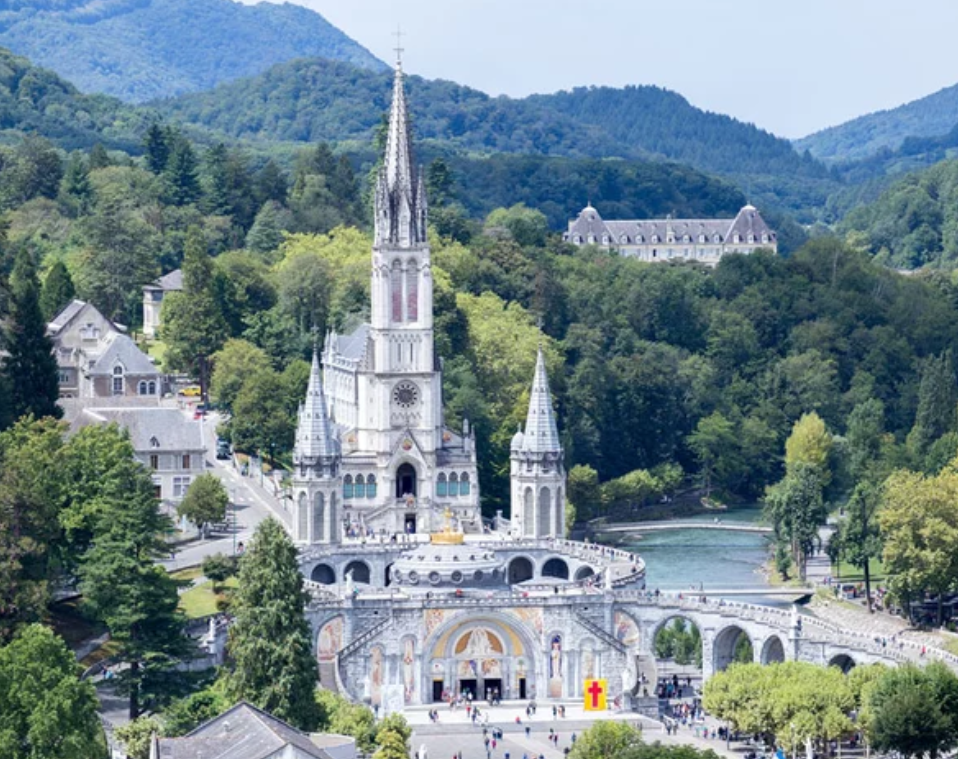
Bernadette Soubirous, who died in 1879, will be canonized by Pope Pius XI in 1933. It is possible today to visit the places where Bernadette lived, following "Le Chemin de Bernadette".
At the scene of the appearances, the Church undertook the construction of a sanctuary in 1871. The Notre-Dame de Lourdes sanctuary, which extends over 52 hectares, conceals multiple treasures: cave of Massabielle, Basilica, Crypt, Basilica Notre-Dame du Rosaire, Saint-Pie X basilica, cross paths…
Believing or not, everyone will find in heavy an atmosphere conducive to meditation and reflection, prayer or meditation. The heart of the Marian city gives off a unique energy that must be lived at least once!
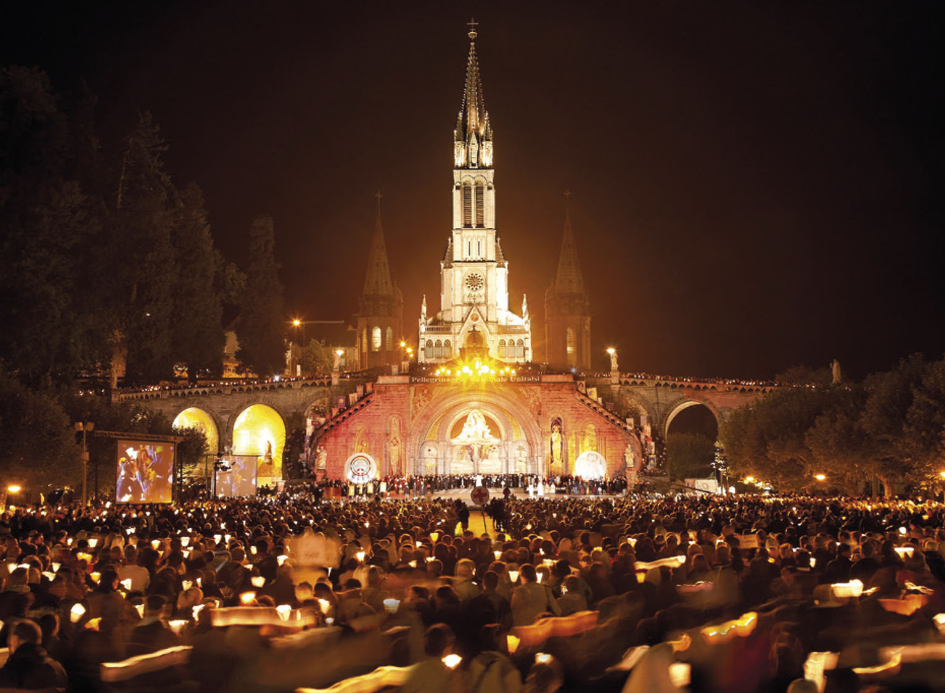
During Marian processions, everyone holds a candle in their hands, and the esplanade is covered with these fragile lights. Everyone expresses their intentions of prayers there, in as many languages as of nationalities represented.
The heart of the sanctuary remains the Massabielle cave. Adorned with a statue of the Virgin, the pilgrims come to pray there and touch the wall of the rock in act of faith, a stone which has become smooth, sweet and shiny since the visit of millions of pilgrims.
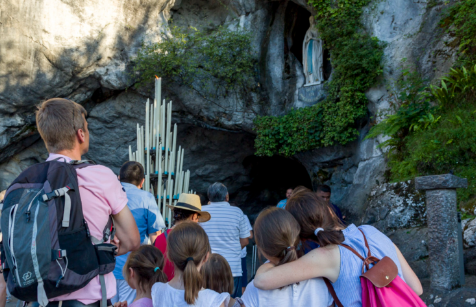
During the ninth appearance, the lady said to Bernadette: "Go drink and wash you at La Fontaine". Bernadette then released a hitherto unknown source, and where the precious Eau de Lourdes comes from.
It was in contact with this water that the first healing miracles were accomplished.
Since then, Lourdes water has fueled the fountains of the sanctuary. This water has become a pilgrimage in itself, a hope for millions of patients around the world, and pilgrims around the world come to drink it and swim in it.

Scientific analyzes did not find any special property to him. As Saint Bernadette said: "One drop is enough! It is the faith that it is necessary! »»
Ancient history of Lourdes: the castle of Lourdes
Contrasting with the contemporary constructions of the sanctuary and the spirit of universal brotherhood that reigns there, we are almost surprised to find in Lourdes, overlooking the city from a rocky spur, a castle with huge ramparts, vestige of medieval wars.
In fact, the site has been inhabited for millennia, as evidenced by prehistoric vestiges, including the famous “Lourdes horse” in mammoth ivory. From the Roman era, fortifications were erected on this strategic position between plain and valleys.
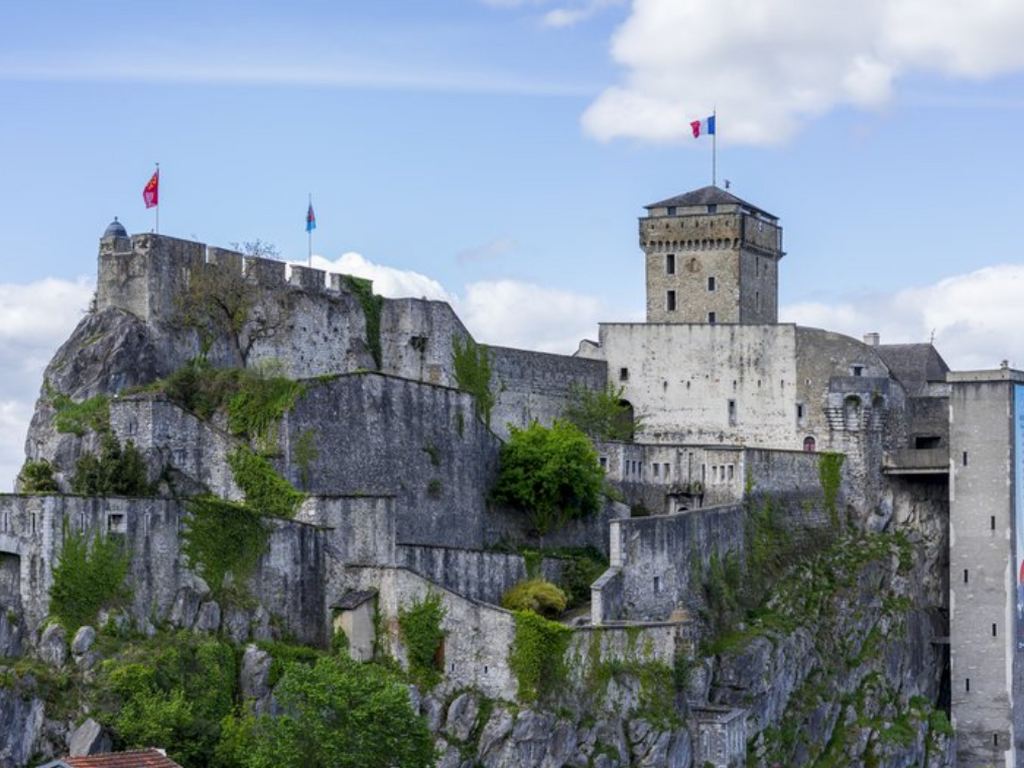
The castle in its current version dates from the 11th century, where it is occupied by the counts of Bigorre. Throughout the Middle Ages, during the Hundred Years War and until the 16th century, this coveted castle will be the subject of several seats. Given to the English by the Treaty of Bretigny in 1360, it will be taken up by the French in 1407.
In the 17th century, the castle became a royal fortress and only welcomed prisoners. He will finally be bought by the city of Lourdes in 1894, which set up the Pyrenean museum there.
- Views: 199




 If the Hautes Pyrenees evoke above all the mountain and nature, they are also full of more epicurean pleasures ...
If the Hautes Pyrenees evoke above all the mountain and nature, they are also full of more epicurean pleasures ...  Confit and foie gras
Confit and foie gras La Garbure
La Garbure Bigorre black pork
Bigorre black pork The sheep of Barèges-Gavarnie
The sheep of Barèges-Gavarnie The trout of the Pyrenees
The trout of the Pyrenees Tarbais bean
Tarbais bean The soft onion of Trébons
The soft onion of Trébons Sweet specialties
Sweet specialties The spit cake
The spit cake Pyrenees honeys
Pyrenees honeys The Berlingots of Cauterets
The Berlingots of Cauterets
 Goat, fresh and gentle, or dry and stronger goat crottins depending on refining, nature or aromatic herbs.
Goat, fresh and gentle, or dry and stronger goat crottins depending on refining, nature or aromatic herbs.
 Madiran wine , tannic and full -bodied red wine that perfectly accompanies traditional dishes and cheeses in the country: garbure, red meats, sauce dishes, duck breast, duck confit or Pyrenees cheese.
Madiran wine , tannic and full -bodied red wine that perfectly accompanies traditional dishes and cheeses in the country: garbure, red meats, sauce dishes, duck breast, duck confit or Pyrenees cheese.

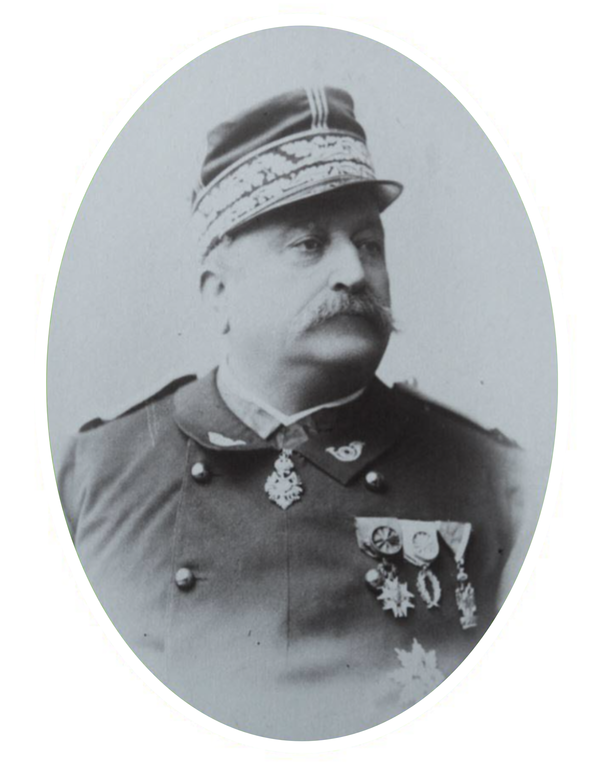
 In each village, each region, there are people who mark history.
In each village, each region, there are people who mark history. From the 1820s, thermalism took off in the Pyrenees . Cauterets opened its first modern thermal baths to La Raillère in 1828 . The thermal baths of Cesar (1844), the thermal baths of Pauze-Vieux (1853) and the neo-onlymes (1879) followed. The thermal stations become a holiday resort for high society , and spa guests fill the palaces.
From the 1820s, thermalism took off in the Pyrenees . Cauterets opened its first modern thermal baths to La Raillère in 1828 . The thermal baths of Cesar (1844), the thermal baths of Pauze-Vieux (1853) and the neo-onlymes (1879) followed. The thermal stations become a holiday resort for high society , and spa guests fill the palaces. He recommends a simple principle remedy, but which requires enormous work: it is a question of stabilizing the terrain , by combining the reforestation and the creation of stored grassy lawns , on stands supported by huge stone walls. For reforestation, he recommends planting larches, non -endemic but very solid conifers.
He recommends a simple principle remedy, but which requires enormous work: it is a question of stabilizing the terrain , by combining the reforestation and the creation of stored grassy lawns , on stands supported by huge stone walls. For reforestation, he recommends planting larches, non -endemic but very solid conifers.
 This titanic project will last more than 10 years, until 1892, creating colossal walls, fed 7 km of Muletier path and 14 km of forest trails.
This titanic project will last more than 10 years, until 1892, creating colossal walls, fed 7 km of Muletier path and 14 km of forest trails.

 Las, faced with the risk of persistent landslides, it was necessary to resolve to permanently close the thermal baths in 1997.
Las, faced with the risk of persistent landslides, it was necessary to resolve to permanently close the thermal baths in 1997.
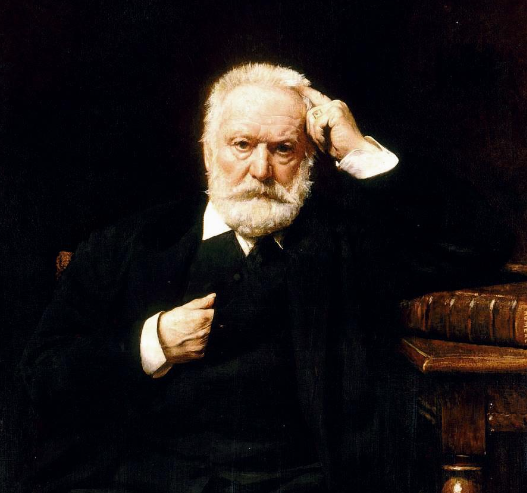
 In summer 1843, during his “trip to the Pyrenees”, Victor Hugo discovered the Cirque de Gavarnie.
In summer 1843, during his “trip to the Pyrenees”, Victor Hugo discovered the Cirque de Gavarnie.
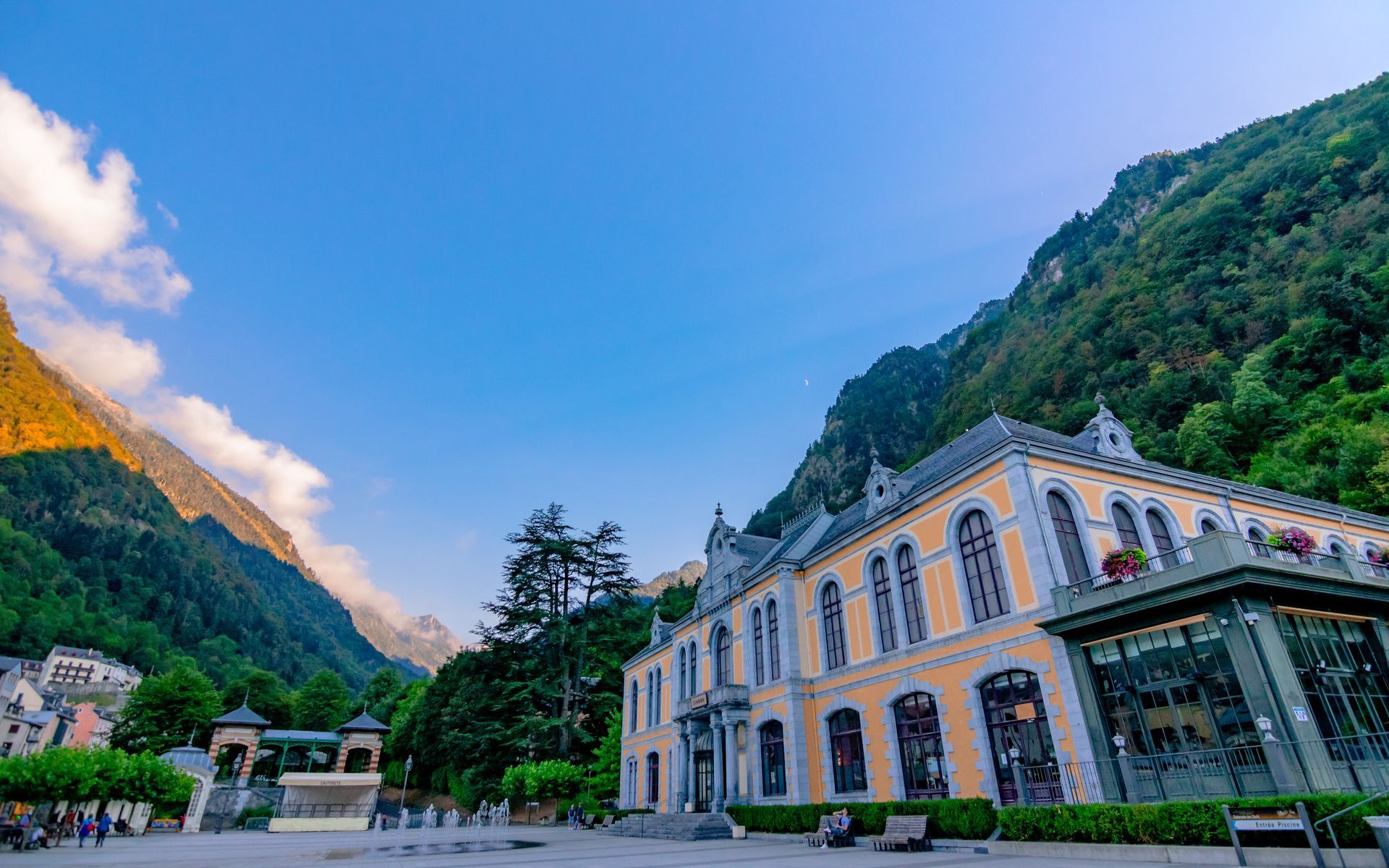


 Just near the esplanade, in the turn that goes up to the Spanish bridge, your attention is drawn to a strange blue chalet, of Slavic inspiration, with crazy charm although strangles in a Pyrenean village!
Just near the esplanade, in the turn that goes up to the Spanish bridge, your attention is drawn to a strange blue chalet, of Slavic inspiration, with crazy charm although strangles in a Pyrenean village! This construction, which is one of the oldest in the city, is very surprising in its atypical mountain look decor Western.
This construction, which is one of the oldest in the city, is very surprising in its atypical mountain look decor Western.